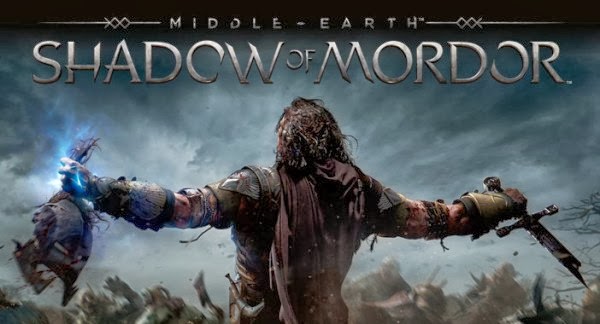 When choosing a property to adapt for a video game, it’s a good idea to select something with a large, well-realized universe in which to pull content. Given this, it’s somewhat surprising that we don’t see more Lord of the Rings themed games. The Lord of the Rings MMO is still going strong (apparently; I’ve never known anybody who actually plays it), the Lego Lord of the Rings game was plenty of fun, and there were some respectable hack and slash games that came out around the time of the LOTR movie trilogy, but most games that have come from the property have been shoddy-at-best. So it was something of a surprise this year when Middle Earth: Shadow of Mordor released, and was one of the best games of the year. With solid and easy-to-pick-up combat and stealth mechanics, Shadow of Mordor is a game that should be enjoyable regardless of one’s familiarity with Tolkien.
When choosing a property to adapt for a video game, it’s a good idea to select something with a large, well-realized universe in which to pull content. Given this, it’s somewhat surprising that we don’t see more Lord of the Rings themed games. The Lord of the Rings MMO is still going strong (apparently; I’ve never known anybody who actually plays it), the Lego Lord of the Rings game was plenty of fun, and there were some respectable hack and slash games that came out around the time of the LOTR movie trilogy, but most games that have come from the property have been shoddy-at-best. So it was something of a surprise this year when Middle Earth: Shadow of Mordor released, and was one of the best games of the year. With solid and easy-to-pick-up combat and stealth mechanics, Shadow of Mordor is a game that should be enjoyable regardless of one’s familiarity with Tolkien.
But first, you should understand that it’s basically a Batman game. The attack/counter/stun/leap combat has been stolen piece-by-piece from the Arkham series, and the general mechanic for sneaking (holding the R trigger, getting behind enemies and pressing X to kill/take-down) is very similar too. You won’t be attaching enemies to Gargoyles or setting explosive gel, but you have ranged attacks that are similar (albeit more powerful) versions of the Batarang, and you can perform takedowns from above, or while hanging from ledges. Talion, Shadow of Mordor’s playable character, even has “Wraith Vision,” which performs the same basic function that Batman’s “Detective Vision” does.
So, if Shadow of Mordor is so similar to the Arkham games, then why play it? Isn’t that just the same as when Dante’s Inferno copied absolutely everything about their game from God of War? Well, Shadow of Mordor deserves some credit for changing up the framework around the game. The Arkham games are fairly linear. While each game has its world littered with Riddler Puzzles, the first Arkham game, Asylum, was laid out like a Metroid-vania game. You collected power-ups that allowed you to explore new areas of Arkham Asylum, but everything was designed so that there was a designated path for you to take.
Arkham City (and Origins) utilized a more open world, but still kept the game progression fairly linear. Shadow of Mordor, on the other hand, immediately gives the player access to a rather large open-world. Sub-missions are everywhere, collectibles are scattered around the map, and you are free to explore areas where the enemies may be too tough for you to defeat.
There is also a segment of your menu called “Sauron’s Army” that is always present. Here, you can see all of the Captains and Warchiefs in the Uruk army and try to hunt them down one-by-one. Each Captain or Warchief has his own strengths and weaknesses, so gathering intel on your enemies to plan out your assault is a key aspect of the game. This feature is available long before it matters in the narrative, so if the player wishes to ignore the story missions and decimate the enemy, they can.
The developers clearly realize that the army is a fun feature, because it eventually comes to dominate the game. You’re eventually tasked with killing all of the Warlords in the land and, when you enter a brand new environment, your new task is to “dominate” (or possess) every Warchief, effectively taking over Sauron’s army as your own. There’s something highly satisfying about opening the “Sauron’s Army” menu and seeing a whole platoon of your own glowing-eyed minions staring back at you.
The story isn’t really anything to write home about. Talion is a Gondor Ranger who was murdered by the Hand of Sauron, alongside his wife and son. He is resurrected by a character initially only known as “The Wraith,” who tells him that they are both cursed and must prevent the rise of Sauron. There are several diversions in the story missions, including a segment about Gollum and another one about a dwarf hunter named Torvin, but these are largely unrelated to the central narrative. The Wraith eventually gets a fairly interesting (and very important, in Middle-Earth lore) role, but the game doesn’t end so much as it stops.
In a better year, Shadow of Mordor probably wouldn’t be receiving quite the amount of attention that it is. However, it’s hard to argue that it’s not a fun game. All of the gameplay mechanics are just as enjoyable as they are in the Batman games, and the framing systems that drive the gameplay emphasize those mechanics even more. It’s a great game to just jump into and have some fun with, and that’s ultimately what matters most.